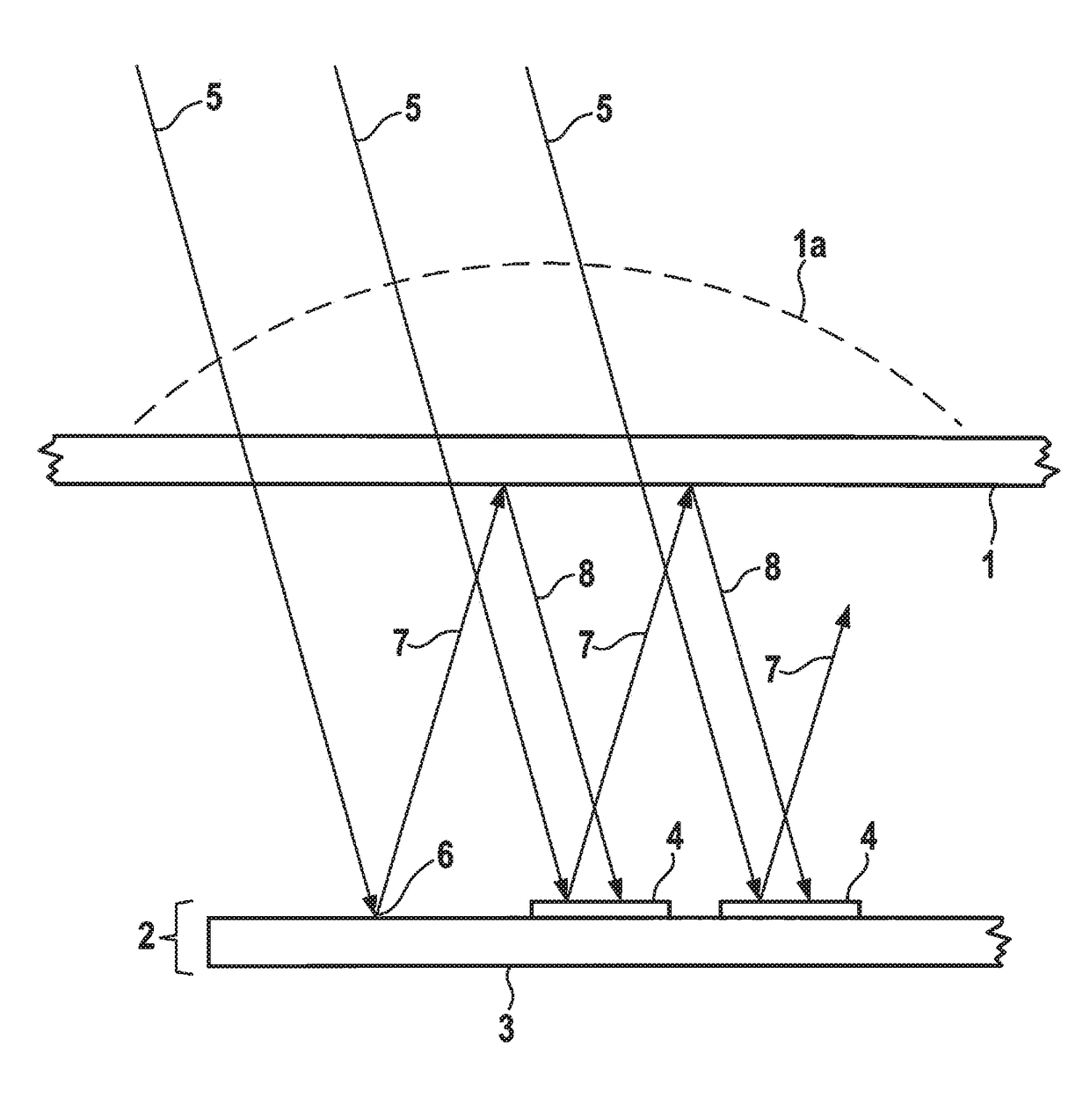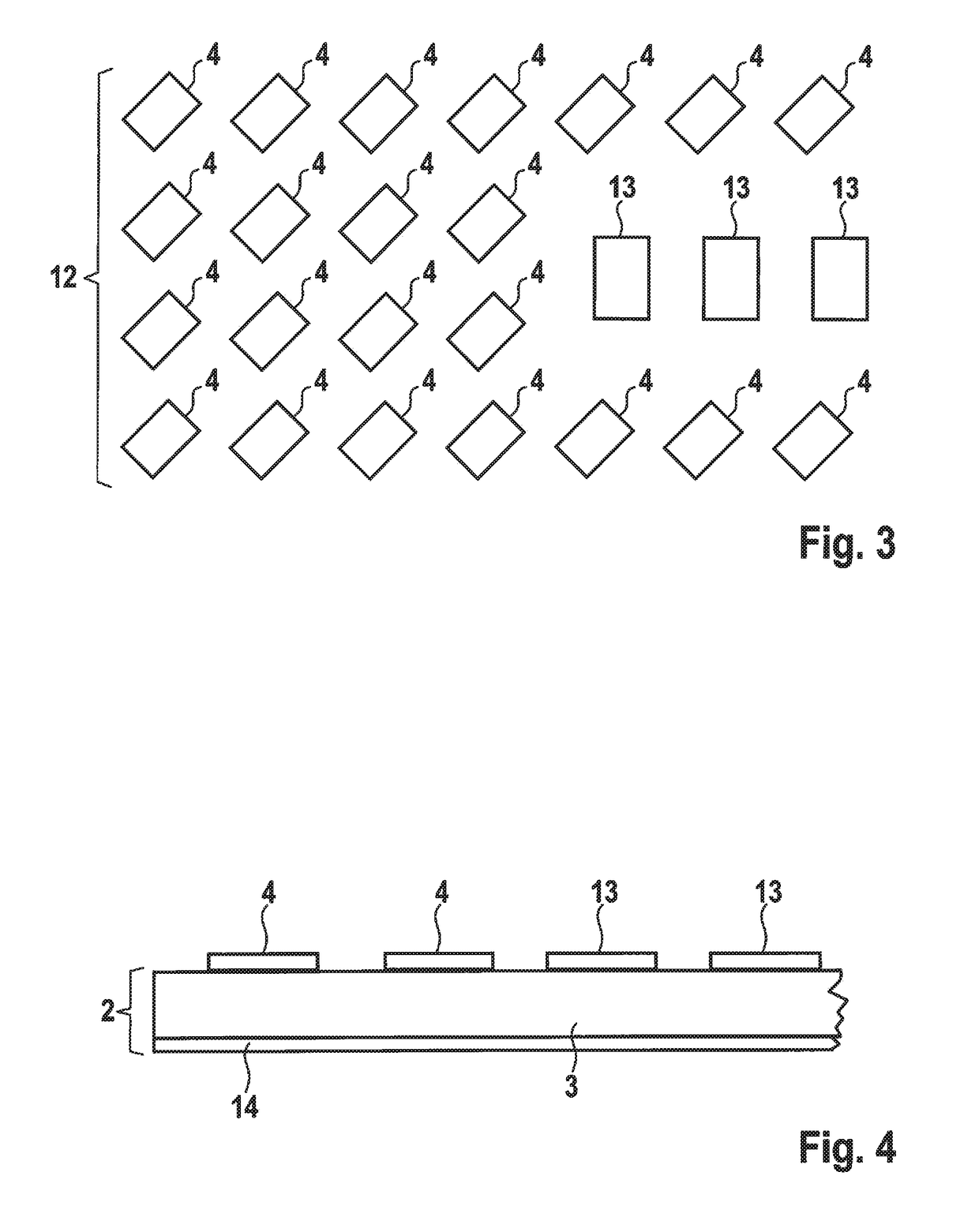Device for receiving microwave radiation
a microwave radiation and device technology, applied in the structure of radiating elements, individually energised antenna arrays, polarised antenna unit combinations, etc., can solve the problems of inability to operate the antenna, impair the reception quality, and multiple reflections between the circuit, so as to avoid multiple reflections and save material and weight, the effect of small siz
- Summary
- Abstract
- Description
- Claims
- Application Information
AI Technical Summary
Benefits of technology
Problems solved by technology
Method used
Image
Examples
Embodiment Construction
[0024]FIG. 1 schematically shows main components of a receiving device. For instance, a circuit board 2 is shown, to which a receiving antenna is applied, whereby the receiving antenna, as shown, may be configured as a patch antenna by small metal surfaces on the top side of circuit board 2. Such patch antennas are widely used for transmitting and / or receiving microwave radiation or millimeter wave radiation and are easy to produce. This circuit board is protected from its surroundings by a housing part 1, which protects circuit board 2 from the effects of weather, dust and dirt and ensures long-term functional capability. Such a housing part is often referred to as a radome 1, which has been made, for example, of a material that is transparent to electromagnetic waves. In the automobile sector, such microwave or millimeter wave sensors are often situated behind body components in a manner that is invisible to other road users, so that it may be advantageous, in addition or as an al...
PUM
 Login to View More
Login to View More Abstract
Description
Claims
Application Information
 Login to View More
Login to View More - R&D
- Intellectual Property
- Life Sciences
- Materials
- Tech Scout
- Unparalleled Data Quality
- Higher Quality Content
- 60% Fewer Hallucinations
Browse by: Latest US Patents, China's latest patents, Technical Efficacy Thesaurus, Application Domain, Technology Topic, Popular Technical Reports.
© 2025 PatSnap. All rights reserved.Legal|Privacy policy|Modern Slavery Act Transparency Statement|Sitemap|About US| Contact US: help@patsnap.com



